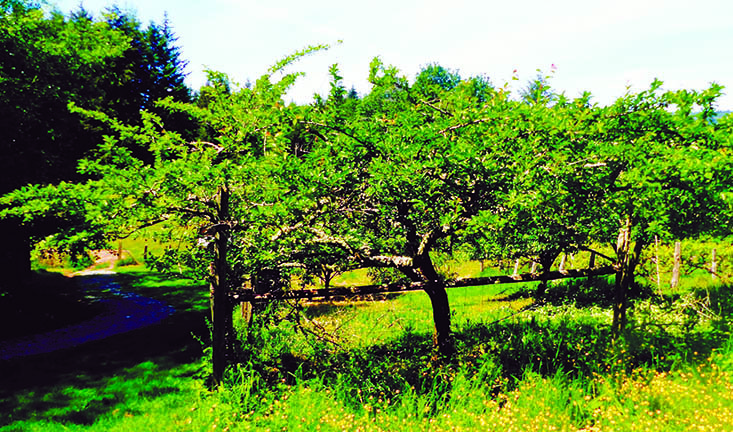Miniature trees have become a popular way to grow fruit in backyards.
Dwarf and semi-dwarf trees are smaller than standard varieties, but they mature and produce fruit more quickly.
"Smaller trees are more efficient for labor. They're also more efficient for space," said Michael Parker, an extension horticulture specialist and associate professor at North Carolina Agricultural and Technical State University. "Why put up one tree when you can plant six small trees with lots of apple varieties? If you lose one tree, it's no big deal. You'll have other trees producing."
As for maturing, "With standard trees, you have to wait five to seven years," Parker said. "It's two to three years with dwarf or smaller trees."
Mini apple trees are popular option, but Japanese plums are also a good choice.
Choosing the right dwarf rootstock will result in miniature orchards, although you'll still need to keep the trees from getting too big for harvesting, Parker said.
"There are different dwarfing rootstocks, starting with 8-foot trees and going to 15 feet," he said. "But you can't just plant them and let them go. A dwarf tree doesn't know it's supposed to stop growing at 8 feet. Dwarf trees are smaller than the standard size, but they still need to be trained and pruned."
Safety is yet another advantage when managing smaller trees. It's easier to scout them for damage and they require less ladder work -- especially when applying chemicals.
"Most homeowners don't have the necessary equipment for spraying over their heads," said Michael Bush, an extension entomologist with Washington State University's Yakima County office. "Toxic spray residues can drip down and run all over the applicators. A lot of pesticide labels warn against spraying more than 10 feet [high]. They suggest that you hire a professional."
Arborists generally recommend pruning apple trees twice a year: first when they're dormant, to create better air circulation and prevent diseases, and second in the summer to eliminate suckers, improve light gathering and control growth.
"Try to keep limbs from growing straight up and down," Bush said. "Encourage branches to grow laterally and keep fruiting lower to the ground."
And don't prune when rain is in the forecast, Bush said. "Blowing rain can introduce fungal and bacterial diseases into the wounds that eventually will spread from tree to tree."
Test the soil for pH and fertility, choose a sunny, well-drained site and avoid low areas that tend to be frost pockets. Eliminate perennial and noxious weeds before you plant. Apply fertilizer regularly.
"Growing apples is not easy," Parker said. "You can't grow fruit trees without spraying [chemicals]. Spray five to six times to control insects and diseases."
The University of Arkansas Division of Agriculture Cooperative Extension Service is a good source for information about appropriate dwarf varieties. It's publication Apple Production for the Home Garden is available at uaex.edu/publications/PDF/FSA-6058.pdf.
HomeStyle on 08/27/2016
